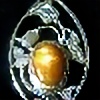HOME | DD
 Hyllyn — Photo-record of a piece
Hyllyn — Photo-record of a piece

Published: 2008-03-31 00:32:20 +0000 UTC; Views: 1720; Favourites: 17; Downloads: 20
Redirect to original
Description
As promised to [link] in this journal [link]I'm posting what some people could mistake for a step-by-step tutorial or similarly related stuff.
I don't consider myself any sort of expert so what I have done here is capture in some photos the process I pursued to make the calligraphy brush rest and weight piece. So I treat this as a photographic record of said process.
However I you feel the need to ask about the process I am happy to provide the answers perusing my limited experience and correcting my mistakes with reliable feedback I have received from Ford Hallam.
I will not describe all in one go because simply it isn't the idea and that would turn it into a step by step, I don't mind providing some information as I said but I want this to work as well as something which would allow people who don't know how this is done to appreciate this kind of work even more.
Unfortunately there's not an entry for tutorials in sculpture as such and I didn't want to risk the wrath of "traditional artists of DeviantArt" and the gallery director by putting it there, however this stuff belongs in a sculpture category, even if the techniques applied here can be used in jewellery making and other metalworking fields.
Enjoy
Hyllyn
Related content
Comments: 16

I have been trying to find tutorials or pictures of carvers at work. there are some on Flickr on the carving of kagamibuta, but I gathered very little in the way of technique. Do you have any pictures of your tools or carving in action? or any ideas where I could find some? I'm a toolmaker/ metal artisan, but this technique is proving to be difficult for me to reverse engineer.
👍: 0 ⏩: 1

On Flickr? or in Picasa?
Tom Sterling made a pretty comprehensive book on how to get to grips with carving netsuke, you can find it over at The Carving Path forum (hosted by Janel Jacobson). I would share what I have in the way of tools without trouble but you will find that much of it is really up to you which tools you end up making to express what you need to in the media of your choice. The techniques are a different story and not too different from what you would do if you were carving in general as taught in sculpture classes.
I have not made a tutorial or anything like that because simply there are folks out there who could do it better than I can so it is not about being jealous of what I know but if I can help with pointing you in the directions where you can ask for feedback and clues then that forum is already an appropriate enough solution.
Best regards.
👍: 0 ⏩: 1

Thanks, I've just checked out The Carving Path and that looks like more than enough to point me in the right direction.
👍: 0 ⏩: 1

Glad to be able to help then.
See you over there.
👍: 0 ⏩: 0

Equal parts of rokusho and cupric sulfate in distilled water. That is the solution for the patina but you must dip the piece prior to patination in daikon raddish pulp I make a mix of pulp and juice to be on the safe side.
👍: 0 ⏩: 0

It´s not repousse!!!!!!!!!!!! 

Sadist ei? one day police will come knocking on my door if they keep reading your comments hahaha.
👍: 0 ⏩: 0

Very cool! Thank you for sharing- Interesting-
👍: 0 ⏩: 1

My pleasure. I figure some photos are self explanatory, some others aren't so feel free to ask.
👍: 0 ⏩: 0

Oooh, it's so neat to see some of the process! Are you electroplating in the picture with the green liquid? I'm kind of curious about the blue paste, too
👍: 0 ⏩: 1

I knew people like you would enjoy it Jen.
No, there's no electroplating going on anywhere in the process. What you see is a solution of cupric sulfate which was previously ground (the blue paste) along with rokusho (a traditional japanese mix of cupric acetate and other related chemicals) in water. The boiling of the solution creates for an environment where the copper plate reacts better to the salts in that solution and a patina is as a consequence deposited little by little (over the course of 30-45 minutes for the base patina). I however added some ingredients which shouldn't have been added such as table salt and that could have affected the patina when I first gave it a shot.
Feel free to fire questions any time.
👍: 0 ⏩: 1

It's neat how different patinas work - I'm going to have to experiment more with them some day when I have a safer environment to do it in
👍: 0 ⏩: 1

These are rather old patinas preserved through time by Japanese traditions, more modern patinas are a totally different game.
The chemicals used in it are not rated as toxic whilst in the near-boiling solution as the salts don't evaporate but you don't want to do this near food producing equipment, at least not without washing everything after. A camping stove and a minimum of equipment is all you need, good ventilation is preferable but literally this can be done in a garden without any problem.
If I can be of help during your experimentation let me know and I will see if I can gather some information for you to peruse.
Kind regards
👍: 0 ⏩: 0






















